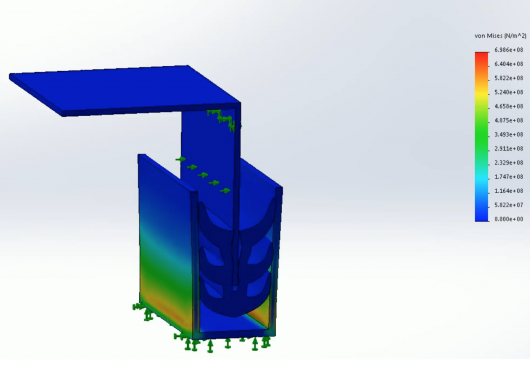
Simulations on Hyperelastic Materials
Finite Element Analysis (FEA) is extensively used at Jehbco to simulate and develop seals. We currently hold over 2600 extrusion designs which have been developed over our four-decades of operations in the silicones industry. Jehbco can both modify our existing designs to suit your application or engineer a new design for you. Our expertise in non-linear multi body contact problems help us develop virtual gland-seal interactions in our software and check for operational validity.

Hyperelastic simulation of a facade joint seal
Hyperelastic models are used to represent silicone rubber models in simulations. To develop numerical models of elastomers various physical tests are carried out such as uniaxial and biaxial tension tests in order to experimentally determine certain parameters for the numerical models. These tests help to incorporate the mechanical properties and thus the behavior of the elastomer in the model.
The boundary conditions of the problem are defined from the customer’s input. These include the operating conditions, loading and movements. These are given as problem-constraints and the model behaves accordingly.
Iterations of various designs are simulated to understand how the seal or gasket behaves under different loads and constraints. Then, the most optimum design is chosen and dies are manufactured to its exact dimensions.
Some of the innovative applications for which we have run simulations include seals for building facades, pressure vessels, washing chambers, panel joining, and gasket compressions.
References
- V. V. Mozgalev and N. R. Prokopchuk, \The choice of best-fit mathematical models of the
behaviour of rubber compounds for finite element analysis,” Kauchuk i Rezina, vol. 1, pp.
32{34, 2014. - ANSYS, \Hyperelasticity,” Tech. Rep.
- \Nonlinear finite element analysis of elastomers,” Tech. Rep. 4, 2010. [Online]. Available:
http://linkinghub.elsevier.com/retrieve/pii/0045794987900162


